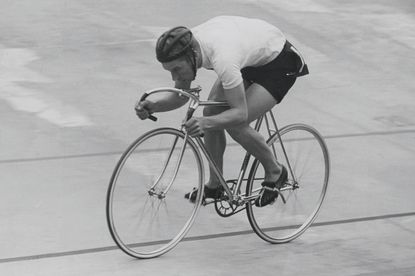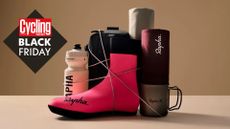Icons of cycling: The Carlton Flyer
A pioneering design that became the manufacturer's flagship frame


Carlton Cycles of Worksop played a crucial part in British cycling history.
The company sponsored professional teams, including TI Carlton, the embryonic TI Raleigh team, and it sponsored individual racers.
But Carlton didn’t just sponsor for advertising, its teams and individual riders were test beds used to refine bikes and frames that club riders and serious racers bought.
>>> 10 types of rider you’ll see on every club run
Carlton’s flagship frame for a long time was the Carlton Flyer.
The Flyer was born in 1935 in response to a change of direction for the company.
It had been established in 1898 by Fred Hanstock, and had manufactured utility bikes as well as developing a line of motorcycles.
Get The Leadout Newsletter
The latest race content, interviews, features, reviews and expert buying guides, direct to your inbox!
Then in 1934 the Hanstock family brought in a new manager. His name was Don O’Donovan.
Born in Cork in 1885, O’Donovan emigrated to South Africa around the turn of the 20th century. He joined the Cape Mounted Rifles and became an extreme distance runner.
He also became interested in cycling and motorcycling.
>>> Best road bikes under £750: a complete buyer’s guide (video)
O’Donovan wanted Carlton to make race bikes, and decided that the quickest way to get brand recognition was to have some top riders on the bike he developed, the Carlton Flyer.
He approached the Monckton Cycling Club, and offered a free Carlton Flyer to its top riders, including its big champion Harry Earnshaw.
In those day amateurs like Earnshaw could carry no advertising on their clothing or on their bikes, not even the bike manufacturer’s name.
So to get around the rules manufacturers made their frames identifiable by sight.
Watch now: Bespoked show - Sturdy cycles Steel Frame
The Hetchins with its curly tubes, and the Baines ‘Flying Gate’, are two examples.
O’Donovan chose steep frame angles and a tiny fork rake to make the Carlton Flyer look distinctive, and it worked.
But steep frame angles and a tiny fork rake make a fast frame, especially on the track, and that’s where the Carlton Flyer cemented its reputation.
It was introduced when the focus of British cycling was time trialling, which a fixed-gear track bike is well suited to.
When interest in bunched road racing increased during the 1950s, Carlton Cycles developed other models to suit, and the Flyer became Carlton’s flagship track model.
Cyril Cartwright won a silver in the 1949 pursuit World Championships on a Carlton Flyer.
Tom Simpson won a team pursuit bronze medal in the 1956 Olympics on the same bike.
Many other Olympic and Worlds medals were won on Flyers over the following years, including the 1970 and 1971 world professional sprint titles.

Thank you for reading 20 articles this month* Join now for unlimited access
Enjoy your first month for just £1 / $1 / €1
*Read 5 free articles per month without a subscription

Join now for unlimited access
Try first month for just £1 / $1 / €1

Chris has written thousands of articles for magazines, newspapers and websites throughout the world. He’s written 25 books about all aspects of cycling in multiple editions and translations into at least 25
different languages. He’s currently building his own publishing business with Cycling Legends Books, Cycling Legends Events, cyclinglegends.co.uk, and the Cycling Legends Podcast
-
 Rapha's loss, your gain: prices slashed sitewide amid profitability concerns
Rapha's loss, your gain: prices slashed sitewide amid profitability concernsThe British clothing brand unveils an almost unheard-of 25% discount across its entire product range
By Hannah Bussey Published
-
 A phone app saved my life after a crash, you shouldn't ride anywhere remote without it
A phone app saved my life after a crash, you shouldn't ride anywhere remote without itHaving taken a life-threatening tumble while out riding on the UK's South Downs, John Powell is coming back from the brink
By Chris Marshall-Bell Published